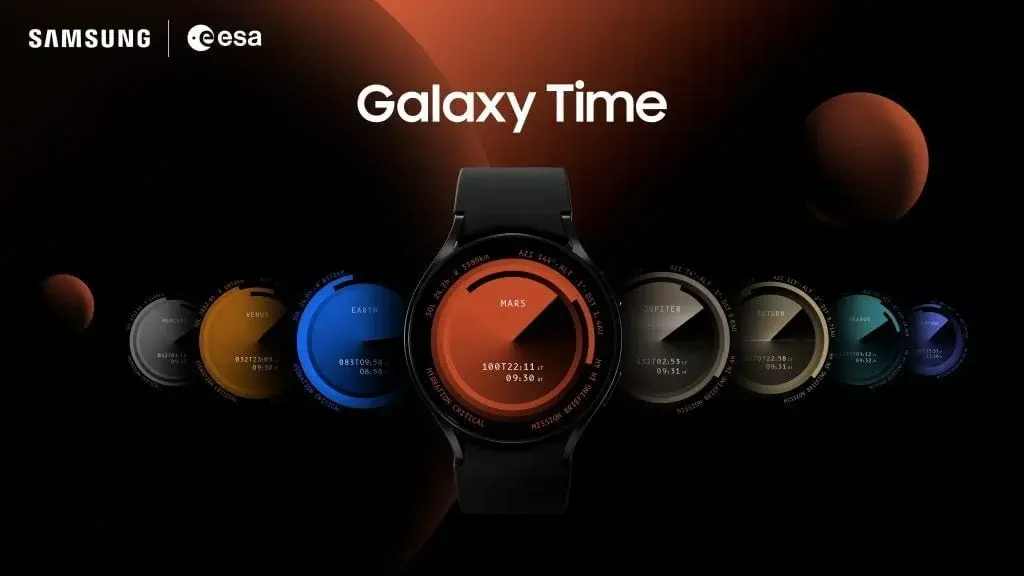Samsung has collaborated with the European Space Agency (ESA) to introduce a unique feature for Galaxy Watch users, enabling them to view time not only for Earth but for all planets within our solar system. This partnership has led to the development of a new set of watch faces, each dedicated to a specific planet to showcase real-time data for that particular celestial body.
Galaxy Time watch face launched
The latest addition, named Galaxy Time, is now accessible on WearOS-powered Galaxy smartwatches, making it compatible with various Samsung smartwatch models, starting from the Galaxy Watch Series 4 and onwards.
Owners of compatible smartwatch models can easily install the watch face directly from the Google PlayStore. Samsung Germany announced the release of Galaxy Time on March 31, although its availability might vary based on users' geographical locations.
Exploring planetary timekeeping
There are a total of eight distinct Galaxy Time watch faces, corresponding to the eight planets in our solar system. Each planet's clock system is unique, as time behaves differently due to various factors such as speed of rotation and orbit around the Sun. To ensure accuracy, Samsung has joined forces with the European Space Agency to guarantee precision in the time data presented by Galaxy Time.
Apart from displaying time, this innovative watch face offers additional valuable information, including the planets' distance from the Sun and Earth, the number of moons they have, their current position, and the ongoing season on each respective planet. The original concept for Galaxy Time is credited to Leo Burnett (Germany), a collaborator on past projects like the Samsung Galaxy S8 campaign.
The European Space Agency (ESA) provides essential data related to planetary rotation and revolution, while the design for the Galaxy Time watch faces was finalized by Metadesign, a brand agency based in Berlin.


Leave a Reply